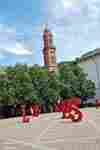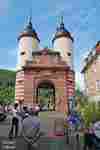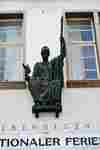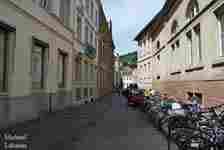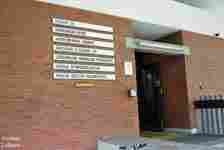.
Content
Church
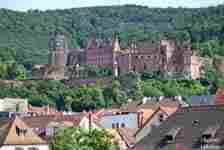
Heidelberg Castle
Heidelberg Castle 2
Heidelberg Castle 3
Heidelberg Castle 4
Heidelberg Castle 5
Heidelberg Castle 6
Heidelberg Castle 7
Heidelberg Castle 8
Ruprechtsbau
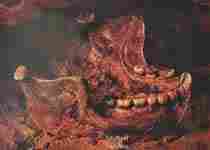
Homo heidelbergensis
Homo heidelbergensis 2
Homo heidelbergensis 3
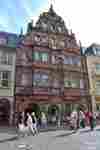
Hotel Ritter
Hotel Ritter 2
Hotel Ritter 3
Hotel Ritter 4
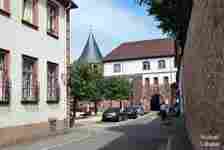
Marstallhof (Studentenwerk)
Marstallhof 2
Marstallhof 3
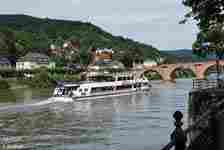
Neckar River
Bridges

Old Photos
Old Photos 2
Old Postcards
Old Postcards 2
Old Postcards 3
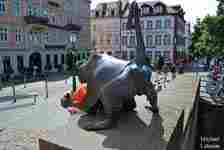
Sculptures, Statues
Brückenaffe
Brückenaffe 2
Brückenaffe 3
Brückenaffe 4
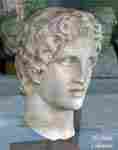
Heidelberger Antikensammlung
Antikensammlung 2
Antikensammlung 3
Antikensammlung 4
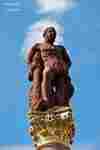
Herkulesbrunnen
Herkulesbrunnen 2

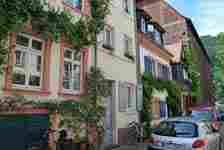
Große Mantelgasse
Große Mantelgasse 2
Schiffgasse
Universitätsplatz
University of Heidelberg
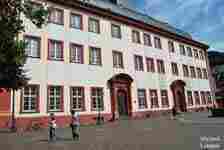
Alte Universität (Old University)
Archaeological Institute
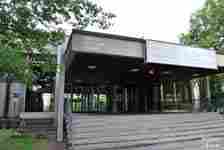
Hörsaalzentrum Chemie
Hörsaalzentrum Chemie 2
Hörsaalzentrum Chemie 3
Hörsaalzentrum Chemie 4
Hörsaalzentrum Chemie 5
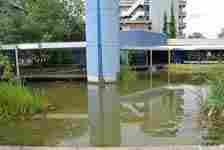
Hörsäle Physik
Hörsäle Physik 2

Kirchhoff-Institut für Physik
Disorder
Foucault-Pendulum
Foucault-Pendulum 2
Order
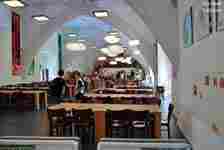
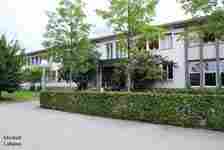
Mathematisches Institut
Mathematisches Institut 2
Mathematisches Institut 3
Mathematisches Institut 4
Mathematisches Institut 5
Mathematisches Institut 6
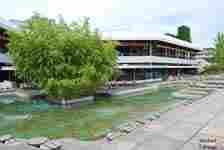
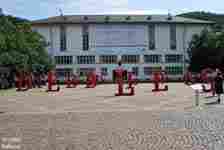
Neue Universität (New University)
Studentenwerk
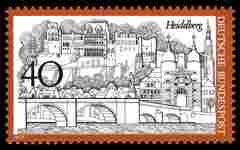
Heidelberg [ˈhaɪdəlbɛʁk] is a city in south-west Germany. The fifth-largest city in the State of Baden-Württemberg after Stuttgart, Mannheim, Karlsruhe and Freiburg im Breisgau, Heidelberg is part of the densely populated Rhine-Neckar Metropolitan Region. In 2009, over 145,000 people lived in the city. Heidelberg lies on the River Neckar in a steep valley in the Odenwald.
A former residence of the Electoral Palatinate, Heidelberg is the location of the University of Heidelberg, well-known far beyond its and Germany's borders. Heidelberg is a popular tourist destination due to its romantic and picturesque cityscape, including Heidelberg Castle and the baroque style Old Town. The US Army has had a military base in Heidelberg since 1951.
Geography
Heidelberg with suburbs
Heidelberg is in the Rhine Rift Valley, mainly on the left bank of the lower part of the River Neckar, bordered by the Königsstuhl (568 m) and the Gaisberg (375 m) mountains. The River Neckar here flows in an east-west direction. On the right bank of the river, the Heiligenberg mountain (445 m) rises. The River Neckar leads to the River Rhine approximately 22 kilometres north-west in Mannheim. Villages incorporated during the 20th century reach from the Neckar Valley along the Bergstraße, a road situated along the Odenwald hills.
Heidelberg is on European walking route E1 (Sweden-Umbria).
The districts of Heidelberg
The Altstadt from the Königsstuhl mountain
Flora and fauna
Since Heidelberg is among the warmest regions of Germany, plants atypical of the central-European climate flourish there, including almond and fig trees; there is also an olive tree in Gaisbergstraße. Alongside the Philosophenweg (Philosophers' Walk) on the opposite side of the Old Town, winegrowing was restarted in 2000.[2]
There is a wild population of African rose-ringed parakeets,[3] and a wild population of Siberian swan geese, which can be mainly seen on the islands in the River Neckar near Bergheim, a district of Heidelberg.
Administrative structures
Heidelberg is a unitary authority within the Regierungsbezirk Karlsruhe. The Rhein-Neckar-Kreis rural district surrounds it and has its seat in the city, although the city is not a part of the district. Heidelberg is a part of the Rhine-Neckar Metropolitan Region, often referred to as the Rhein-Neckar Triangle. This region consists of the southern part of the State of Hessia, the southern part of the State of Rhineland-Palatinate (Vorderpfalz), the administrative districts of Mannheim and Heidelberg, and the southern municipalities of the Rhein-Neckar-Kreis. The Rhein-Neckar Triangle became a European metropolitan area in 2005.
Heidelberg consists of 14 districts distributed in six sectors of the city. In the central area, there are Altstadt (the Old Town), Bergheim and Weststadt; in the north, Neuenheim and Handschuhsheim; in the east, Ziegelhausen and Schlierbach; in the south, Südstadt, Rohrbach, Emmertsgrund, and Boxberg; in the southwest, Kirchheim; in the west, Pfaffengrund and Wieblingen. A new city district, tentatively named Bahnstadt, is planned on land in Weststadt and Wieblingen. The new district will have approximately 5,000–6,000 residents and employment for 7,000.
Neighbouring communes
The following cities and communes border the city of Heidelberg, beginning in the west and then going in a clockwise direction: Edingen-Neckarhausen, Dossenheim, Schriesheim, Wilhelmsfeld, Schönau, Neckargemünd, Bammental, Gaiberg, Leimen, Sandhausen, Oftersheim, Plankstadt, Eppelheim (all part of the Rhein-Neckar-Kreis) and Mannheim.
Climate
Heidelberg has an oceanic climate (Köppen climate classification Cfb), defined by the protected valley between the Pfälzerwald and the Odenwald. Year-round, the mild temperatures are determined by maritime air masses coming from the west. In comparison to the nearby Upper Rhine Plain, Heidelberg's position in the valley leads to more frequent easterly winds than average. The hillsides of the Odenwald favour clouding and precipitation. The warmest month is July, the coldest is January. Temperatures rising to more than 30°C in midsummer are no rarity. According to the German Meteorological Service, Heidelberg was the warmest place in Germany in 2009.[4][5][6]
This panorama from the Theodor-Heuss-Brücke shows the River Neckar through Heidelberg. On the left is Neuenheim, with its Neckarwiesen, on the right hand is the Altstadt.
| Climate data for Heidelberg | |||||||||||||
|---|---|---|---|---|---|---|---|---|---|---|---|---|---|
| Month | Jan | Feb | Mar | Apr | May | Jun | Jul | Aug | Sep | Oct | Nov | Dec | Year |
| Average high °C (°F) | 3.8 (38.8) |
6.1 (43.0) |
10.9 (51.6) |
15.4 (59.7) |
19.9 (67.8) |
23.0 (73.4) |
25.5 (77.9) |
25.1 (77.2) |
21.5 (70.7) |
15.3 (59.5) |
8.5 (47.3) |
4.8 (40.6) |
15.0 (59.0) |
| Average low °C (°F) | −1.4 (29.5) |
−0.7 (30.7) |
1.9 (35.4) |
4.9 (40.8) |
8.9 (48.0) |
12.2 (54.0) |
14.0 (57.2) |
13.8 (56.8) |
10.6 (51.1) |
6.7 (44.1) |
2.4 (36.3) |
−0.4 (31.3) |
6.1 (42.9) |
| Precipitation mm (inches) | 56 (2.2) |
53 (2.1) |
53 (2.1) |
61 (2.4) |
79 (3.1) |
86 (3.4) |
71 (2.8) |
66 (2.6) |
53 (2.1) |
58 (2.3) |
66 (2.6) |
66 (2.6) |
770 (30.3) |
| Source: Intellicast[7] | |||||||||||||
History
Early history
Between 600,000 and 200,000 years ago[citation needed], "Heidelberg Man" died at nearby Mauer. His jaw bone was discovered in 1907; with scientific dating, his remains were determined to be the earliest evidence of human life in Europe. In the 5th century BC, a Celtic fortress of refuge and place of worship were built on the Heiligenberg, or "Mountain of Saints". Both places can still be identified. In 40 AD, a fort was built and occupied by the 24th Roman cohort and the 2nd Cyrenaican cohort (CCG XXIIII and CCH II CYR). The Romans built and maintained castra (permanent camps) and a signalling tower on the bank of the Neckar. They built a wooden bridge based on stone pillars across it. The camp protected the first civilian settlements that developed. The Romans remained until 260 AD, when the camp was conquered by Germanic tribes.
Middle Ages
Modern Heidelberg can trace its beginnings to the fifth century. The village Bergheim (Mountain Home) is first mentioned in that period, in documents dated to 769 AD. Bergheim now lies in the middle of modern Heidelberg. The people gradually converted to Christianity. In 863 AD, the monastery of St. Michael was founded on the Heiligenberg inside the double rampart of the Celtic fortress. Around 1130, the Neuberg Monastery was founded in the Neckar valley. At the same time, the bishopric of Worms extended its influence into the valley, founding Schönau Abbey in 1142. Modern Heidelberg can trace its roots to this 12th century monastery. The first reference to Heidelberg can be found in a document in Schönau Abbey dated to 1196. This is considered the founding date for Heidelberg. In 1155, Heidelberg castle and its neighboring settlement were taken over by the house of Hohenstaufen. Conrad of Hohenstaufen became Count Palatine of the Rhine (German: Pfalzgraf bei Rhein). In 1195, the Palatinate passed to the House of Welf through marriage.
The Heidelberg Castle, here shown in a painting by Carl Blechen, was destroyed by the French during the war of succession of the Electoral Palatinate
View of castle from the marketplace
In 1225, Louis I, Duke of Bavaria obtained the Palatinate, and thus the castle came under his control. By 1303, another castle had been constructed for defense. In 1356, the Counts Palatine were granted far-reaching rights in the Golden Bull, in addition to becoming Electors. In 1386, the University of Heidelberg was founded by Rupert I, Elector Palatine.
Modern history
The University of Heidelberg played a leading part in the era of humanism and reformation and the conflict between Lutheranism and Calvinism in the 15th and 16th centuries. Heidelberg's library, founded in 1421, is the oldest public library in Germany still intact. A few months after the proclamation of the 95 Theses, in April 1518, Martin Luther was received in Heidelberg, to defend them. In 1537, the castle located further up the mountain was destroyed in a gunpowder explosion. The duke's palace was built at the site of the lower castle.
The siege of Heidelberg 1622
In November 1619, the royal crown of Bohemia was offered to the Elector, Frederick V. (He was married to Elizabeth, eldest daughter of James I and VI of England and Scotland). He became known as the "winter king", as he reigned for only one winter before the Imperial House of Habsburg regained the crown by force. This overthrow in 1621 marked the beginning of the Thirty Years' War. In 1622, after a siege of two months, the armies of the Catholic League, commanded by Johann Tserclaes, Count of Tilly, captured Heidelberg. He gave the famous Bibliotheca Palatina from the Church of the Holy Spirit to the Pope as a present. The Catholic Bavarian branch of the House of Wittelsbach gained control over the Palatinate and the title of Prince-Elector. In 1648, at the end of the war, Frederick V's son Charles I Louis, Elector Palatine, was able to recover his titles and lands.
Urbain de Maillé-Brézé fought in many battles. He also participated in the Siege of La Rochelle (1627–1628). In 1635 he conquered Heidelberg and Speyer, together with Jacques-Nompar de Caumont, duc de la Force, at the head of the Army of Germany.
To strengthen his dynasty, Frederick arranged the marriage of his daughter Liselotte to Philip I, Duke of Orléans, the brother of Louis XIV, king of France. In 1685, after the death of Charles Louis' son Elector Charles II, Louis XIV laid claim to his sister-in-law's inheritance. The Germans rejected the claim, in part because of religious differences between local Protestants and the French Catholics, as the Protestant Reformation had divided the peoples of Europe. The War of the Grand Alliance ensued. In 1689, French troops took the city and castle, bringing nearly total destruction to the area in 1693. As a result of destruction due to repeated French invasions related to the war of the palatinate succession coupled with severe winters, thousands of Protestant German Palatines emigrated from the lower Palatinate in the early 18th century. They fled to other European cities (where the refugees were called "the poor Palatines") and especially to London. In sympathy for the Protestants, in 1709–1710, Queen Anne's government arranged transport for nearly 6,000 Palatines to New York. Others were transported to Pennsylvania. They worked off their passage and later settled in the English colonies.
In 1720, religious conflicts with the mostly Protestant citizens of Heidelberg after he assigned a major church for exclusively Catholic use caused the Roman Catholic Prince-Elector Charles III Philip to transfer his residence to nearby Mannheim. The court remained there until the Elector Charles Theodore became Elector of Bavaria in 1777 and established his court in Munich. In 1742, Elector Charles Theodore began rebuilding the Palace. In 1764, a lightning bolt destroyed other palace buildings during reconstruction, causing the work to be discontinued.
1803 to 1933
Heidelberg fell to the Grand Duchy of Baden in 1803. Charles Frederick, Grand Duke of Baden, refounded the University, named "Ruperto-Carola" after its two founders. Notable scholars soon earned it a reputation as a "royal residence of the intellect". In the 18th century, the city was rebuilt in Baroque style on the old Gothic layout.
In 1810, the French revolution refugee Count Charles Graimberg began to preserve the palace ruins and establish a historical collection. In 1815, the Emperor of Austria, the Emperor of Russia and the King of Prussia formed the "Holy Alliance" in Heidelberg. In 1848, the German National Assembly was held there. In 1849, during the Palatinate-Baden rebellion of the 1848 Revolutions, Heidelberg was the headquarters of a revolutionary army. It was defeated by a Prussian army near Waghaeusel. The city was occupied by Prussian troops until 1850. Between 1920 and 1933, the University of Heidelberg became the center of notable physicians Czerny, Erb, and Krehl; and humanists Rohde, Weber, and Gundolf.
Nazism and the war period
During the Nazi regime (1933–1945), Heidelberg was a stronghold of the NSDAP, the strongest party in the elections before 1933 (the NSDAP obtained 30% at the communal elections of 1930[8]). The NSDAP received 45.9% of the votes in the German federal election of March 1933 (the national average was 43.9%).[9] Non-Aryan university staff were discriminated against. By 1939, one-third of the university's staff had been forced out for racial and political reasons. The non-Aryan professors were sent off in 1933, within one month of Hitler's rise to power. The lists were prepared beforehand.[vague][citation needed]
Between 1934 and 1935, the Reichsarbeitsdienst (State labor service) and University of Heidelberg students built the huge Thingstätte amphitheatre on the Heiligenberg north of the old part of Heidelberg, for Nazi (NSDAP) and SS events. A few months later, the inauguration of the huge Ehrenfriedhof memorial cemetery completed the second and last NSDAP project in Heidelberg. This cemetery is on the southern side of the old part of town, a little south of the Königstuhl hilltop. During WWII and after, Wehrmacht soldiers were buried there.
During the Kristallnacht on November 9, 1938, Nazis burned down synagogues at two locations in the city. The next day, they started systematic deportation of Jews, and sent 150 Jews to Dachau concentration camp. On October 22, 1940, during the "Wagner Buerckel event", the Nazis deported 6000 local Jews, including 281 from Heidelberg, to Camp Gurs concentration camp in France. Within a few months, as many as 1000 of them (201 from Heidelberg) died of hunger and diseases.[10] Among the deportees from Heidelberg, the poet Alfred Mombert (1872–1942) left the camp in April 1941 thanks to the Swiss poet Hans Reinhart.[11] From 1942, the deportees that had survived internment in Gurs where deported to Eastern Europe, where most of them were murdered.
On March 29, 1945, the Wehrmacht left the city after destroying three arches of the old bridge, Heidelberg's treasured river crossing. They also destroyed the more modern bridge downstream. The U.S. Army (3rd Infantry, 7th Army) entered Heidelberg on March 30, 1945. The civilian population surrendered without resistance.[12]
Some historians[who?] suggested Heidelberg escaped bombing in WWII because the U.S. Army wanted to use the city as a garrison after the war. As Heidelberg was neither an industrial center nor a transport hub, it did not present a target of opportunity. Other notable university towns, such as Tübingen and Göttingen, were spared bombing as well. Allied air raids focused extensively on the nearby industrial cities of Mannheim and Ludwigshafen.
The U.S. Army may have chosen Heidelberg as a garrison base due to its excellent infrastructure, including the Heidelberg-Mannheim Autobahn (freeway), which connected to the Mannheim-Darmstadt-Frankfurt Autobahn, and the U.S. Army installations in Mannheim and Frankfurt. The intact railroad infrastructure was more important in the late 1940s and early 1950s, when most heavy loads were still carried by train, not by truck. Heidelberg had the untouched "Grossdeutschland Kaserne" Wehrmacht installation. The US Army used it as the Campbell Barracks soon after.
History after 1945
In 1945, the University was reopened relatively quickly as a result of the initiative of a small group of professors, among whom were the anti-Nazi economist Alfred Weber and the philosopher Karl Jaspers.[13] The surgeon Karl Heinrich Bauer was nominated rector.
On December 9, 1945, US Army General George S. Patton had a car accident in the adjacent city of Mannheim, and died in the Heidelberg US Army hospital on December 21, 1945. The funeral ceremony was held at the Heidelberg-Weststadt Christuskirche (Christ Church), and he was buried in the 3rd Army cemetery in Luxembourg.[14]
During the post-war military occupation, the U.S. Army used the Thingsstätte for cultural and religious events. Civilian use started in the early-to-mid 1980s for occasional concerts and other cultural events. Today, the celebrations on Hexennacht (Witches' Night, also called Walpurgis Night), the night of April 30, are a regular "underground" fixture at the Thingstätte. Thousands of mostly young people spontaneously congregate there to drum, to breathe fire, and to juggle. The event has gained fame throughout the region, as well as a certain notoriety due to the amount of trash left behind.
Cityscape
The old town
The marketplace, with Town Hall on the left
Heidelberg's old city centre from the castle above
Heidelberg Castle with the Old Bridge in foreground, 2010.
The "old town" (German: Altstadt), on the south bank of the Neckar, is long and narrow. It is dominated by the ruins of Heidelberg Castle, 80 metres above the Neckar on the steep wooded slopes of the Königstuhl (King's chair or throne) hill.
The Main Street (Hauptstrasse), a mile-long pedestrian street, running the length of the old town.
The old stone bridge was erected 1786–1788. A medieval bridge gate is on the side of the old town, and was originally part of the town wall. Baroque tower helmets were added as part of the erection of the stone bridge in 1788.
The Church of the Holy Spirit (Heiliggeistkirche), a late Gothic church in the marketplace of the old town.
The Karls‘ gate (Karlstor) is a triumphal arch in honour of the Prince Elector Karl Theodor, located at Heidelberg's east side. It was built 1775–1781 and designed by Nicolas de Pigage.
The house Zum Ritter Sankt Georg (Knight St. George) is one of the few buildings to survive the War of Succession. Standing across from the Church of the Holy Spirit, it was built in the style of the late Renaissance. It is named after the sculpture at the top.
The Marstall (Stables), a 16th-century building on the Neckar that has served several purposes through its history. It is now a cafeteria for the university.
Heidelberg Castle
Main article: Heidelberg Castle
Historic map of the Heidelberg Castle
The Heidelberg Castle and the Old Bridge
The castle is a mix of styles from Gothic to Renaissance. Prince Elector Ruprecht III (1398–1410) erected the first building in the inner courtyard as a royal residence. The building was divided into a ground floor made of stone and framework upper levels. Another royal building is located opposite the Ruprecht Building: the Fountain Hall. Prince Elector Philipp (1476–1508) is said to have arranged the transfer of the hall's columns from a decayed palace of Charlemagne from Ingelheim to Heidelberg.
In the 16th and 17th centuries, the Prince Electors added two palace buildings and turned the fortress into a castle. The two dominant buildings at the eastern and northern side of the courtyard were erected during the rule of Ottheinrich (1556–1559) and Friedrich IV (1583–1610). Under Friedrich V (1613–1619), the main building of the west side was erected, the so called "English Building".
The castle and its garden were destroyed several times during the 30 Years' War and the Palatine War of Succession. As Prince Elector Karl Theodor tried to restore the castle, lightning struck in 1764, and ended all attempts at rebuilding. Later on, the castle was misused as a quarry; castle stones were taken to build new houses in Heidelberg. This was stopped in 1800 by Count Charles de Graimberg, who then began the preservation of the Heidelberg Castle.
Although the interior is in Gothic style, the King's Hall was not built until 1934. Today, the hall is used for festivities, e.g. dinner banquets, balls and theatre performances. During the Heidelberg Castle Festival in the summer, the courtyard is the site of open air musicals, operas, theatre performances, and classical concerts performed by the Heidelberg Philharmonics.
The castle is surrounded by a park, where the famous poet Johann von Goethe once walked. The Heidelberger Bergbahn funicular railway runs from Kornmakt to the summit of the Königstuhl via the castle.
View from the so-called "Philosophers' Walk" (German: Philosophenweg) towards the Old Town, with Heidelberg Castle, Heiliggeist Church and the Old Bridge.
Philosophers' Walk
On the northern side of the Neckar is located the Heiligenberg (Saints' Mountain), along the side of which runs the Philosophers' Walk (German: Philosophenweg), with scenic views of the old town and castle. Traditionally, Heidelberg's philosophers and university professors would walk and talk along the pathway. Farther up the mountain lie the ruined 11th-century Monastery of St. Michael, the smaller Monastery of St. Stephen, a Nazi-era amphitheater, and the remains of an earthen Celtic hill fort from the 4th century BC.
Heidelberg churches
There are many historical churches in Heidelberg and its environs. The Church of the Holy Spirit has been shared over the centuries since the Protestant Reformation by both Catholics and Protestants. It is one of the few buildings to survive the many wars during the past centuries. It was rebuilt after the French set fire to it in 1709 during the War of the Palatinian Succession. The church has remains of the tombs and epitaphs of the past Palatinate electors. This Church stands in the Marktplatz next to the seat of local government. In 1720, Karl III Philip, Elector Palatine came into conflict with the town's Protestants as a result of giving the Church of the Holy Spirit exclusively to the Catholics for their use. It had previously been split by a partition and used by both congregations. Due to pressure by the mostly Protestant powers of Prussia, Holland, and Sweden, Prince Karl III Philip gave way and repartitioned the church for joint use. In 1936 the separating wall was removed. The church is now exclusively used by Protestants. Furthermore there is the Catholic Church of the Jesuits. Its construction began in 1712. It was completed with the addition of a bell tower from 1866 – 1872. The church is also home to the Museum für sakrale Kunst und Liturgie (Museum of Ecclesiastical Arts). The oldest church in Heidelberg is the St. Peter's Church (now Lutheran). It was built by early Christians (Catholics) sometime during the 12th century, although there is no exact documentation of the date.
Church of the Holy Spirit
The Church of the Jesuits
St. Peter's Church
Education
Universities and academia
Main article: University of Heidelberg
Main article: List of University of Heidelberg people
Old university hall
The university library
Heidelberg is known for its institutions of higher education. The most famous of those is the University of Heidelberg. Founded in 1386, it is one of Europe's oldest institutions. In fact, Heidelberg is the oldest university town of today's Germany. Among the prominent thinkers associated with the institution are Georg Wilhelm Friedrich Hegel, Karl Jaspers, Hans-Georg Gadamer, Jürgen Habermas, Karl-Otto Apel and Hannah Arendt. The campus is situated in two urban areas and several buildings. In numerous historical buildings in the old town there are the Faculties of the Humanities, the Social Science and the Faculty of Law. The Faculties of Medicine and Natural Science are settled on the Neuenheimer Feld Campus.
Since 1904 there has been a College of Educational Science, the Pädagogische Hochschule Heidelberg; since 1979 there has been a college of Jewish Studies, the Hochschule für Jüdische Studien Heidelberg. It comprises nine branches specializing on both religion and Jewish culture. The University of Applied Sciences in Heidelberg, the SRH Hochschule Heidelberg was founded in 1992, is accredited by the German state and is situated in the Science Tower in Wieblingen. The Schiller International University, a private American university is also represented with a campus in Heidelberg offering several undergraduate and graduate programs in the fields of International Business and International Relations and Diplomacy.
Research
In addtition to the research centers and institutes of the university, there are numerous research institutions situated in the city of Heidelberg. Among them are the European Molecular Biology Laboratory (EMBL), European Molecular Biology Organization (EMBO), the German Cancer Research Center (DKFZ), Max Planck Institute for Medical Research, Max Planck Institute for Astronomy, Max Planck Institute for Nuclear Physics, Max Planck Institute for Comparative Public Law and International Law.
Schools
Heidelberg is home to 23 elementary schools. There are several institutions of secondary education, both public and private, representing all levels of the German school system. There are 14 Gymnasiums, with six of them private. With 52% of secondary students attending a Gymnasium, Heidelberg sits above the German average, perhaps because a large number of academics live in Heidelberg and its environs. They include the Bunsen-Gymnasium, the Helmholtz-Gymnasium, the Hölderlin-Gymnasium and the Elisabeth-von-Thadden-Schule. Then there are seven Realschule, ten Hauptschule and nine vocational schools (the so-called Berufsschule). In addition, there are several folk high schools with different specialisations.[15]
Economy
Tourism
In 2004, 81.8% of people worked for service industries, including tourism. As a relic of the period of Romanticism, Heidelberg has been labeled a "Romantic town". This is used to attract more than 3.5 million visitors every year. Many events are organized to attract visitors. Heidelberg is located on four tourist roads: Bergstraße, Bertha Benz Memorial Route, Castle Road, and Straße der Demokratie (Road of Democracy).
Industry
Only 18% of employment is provided by industry. Printing and publishing are important enterprises; nearby Walldorf is a center of the IT industry and SAP World Headquarters. Noted pen manufacturer Lamy has its headquarters and factory in Heidelberg-Wieblingen. Heidelberger Druckmaschinen has its headquarters here; its factory is loctated in Walldorf. Soft-drink company Wild-Werke, manufacturer of the Capri-Sonne (Capri-Sun in the U.S.) is located in Heidelberg-Kirchheim.
With its long Hauptstrasse, Heidelberg is a shopping destination for people from the surrounding smaller towns.
Railways
Heidelberg has a railway station on the Rhine Valley railway and Intercity Express (ICE) trains call. This station is served by the RheinNeckar S-Bahn.
United States military installations
During World War II, Heidelberg was one of the few major cities in Germany not significantly damaged by Allied bombing. Situated in the American Zone of Germany, Heidelberg became the headquarters of the American forces in Europe. Several military installations remain, including Campbell Barracks, the former Wehrmacht Grossdeutschland-Kaserne, where headquarters for several units are located. These include US Army, Europe (USAREUR) and NATO's Component Command-Land Headquarters. (Until 2004, this was designated Joint Headquarters Centre, and before that, LANDCENT).
Campbell Barracks and Mark Twain Village are both in Südstadt; Patton Barracks is in nearby Kirchheim. Nachrichten Kaserne in Rohrbach is home to the former Heidelberg Army Hospital, now designated the Heidelberg Health Center. Patrick Henry Village, the largest U.S. military housing area in the Heidelberg area, is west of Kirchheim. These installations, including Tompkins Barracks and Kilbourne Kaserne in nearby Schwetzingen, plus the Germersheim Depot, used to make up the U.S. Army Garrison Heidelberg. Tompkins Barracks is home to U.S. Army Installation Management Command Europe Region. The Heidelberg U.S. Army Air Field (Heidelberg AAF) was converted to an heliport (mostly Blackhawk Helicopters) after the NATO Kosovo campaign.
The children of United States Department of Defense employees based in Heidelberg tend to attend on-base schools operated by the DODDS-E (Department of Defense Dependents Schools – Europe). There are three schools of this kind: Heidelberg High School in Mark Twain Village (Mark Twain Elementary School closed at the completion of the 2010–2011 school year), and Heidelberg Middle School and Patrick Henry Elementary in Patrick Henry Village.[16] Many of the families live in the local communities and have the wonderful opportunity to experience the German culture. The military bases are simply isolated for security reasons. Most US installations and Barracks have been fenced. The fences are to keep those who are not authorized out and those who are authorized, safe. Access is limited to US Army staff and their families only. The much-enjoyed fair that was held for decades at Patrick Henry Village has been canceled since the stepped up security following 9/11.
On October 19, 2009 the U.S. Army announced that it will be building new headquarters for USAREUR in Wiesbaden. The move from Heidelberg will take place in 2012 and 2013, and will be completed by 2014.[17] By 2015 all United States forces will have moved out of Heidelberg. The barracks and the housing areas will be handed over to the German state for conversion to civilian use.
Culture
Events
Heidelberg with its illuminated bridge
Throughout the year there are different regular festivals and events hosted and organized in Heidelberg. In February, the Ball der Vampire (Ball of the Vampires)[18] is arranged and Fasching, the equivalent of Mardis Gras or Carnival in some German region, with a giant vampire-themed costume party at the local castle or city hall is celebrated. In March or April the Heidelberger Frühling (Heidelberg Spring), the Classic Music Festival and the international Easter egg market are conducted. During the last weekend of April there is an annually organized half marathon. In the summertime there are the Frühlingsmesse on the Messeplatz (May) and Illumination of the castle and bridge with lights and fireworks take place. In September, each last Saturday the Old Town Autumn Festival is held.[19] It includes a Medieval Market, an arts and crafts market, a flea market, and music from Samba to Rock. During October or November there are the Heidelberger Theater Days and a jazz festival. Every year in November the International Filmfestival Mannheim-Heidelberg take place in the city, too. The festival presents arthouse films of international newcomer directors and is held jointly by both of the cities.[20] During Christmas there is a Christmas market throughout the oldest part of the city. A famous gift is the chocolate called Heidelberger Studentenkuss (student kiss).
Museums and exhibitions
Among the most prominent museums of Heidelberg are for instance the Carl Bosch Museum which shows life and work of chemist and Nobel Prize-winner Carl Bosch. Then there is the Documentation and Culture Centre of German Sinti and Roma (Dokumentations- und Kulturzentrum Deutscher Sini und Roma) describing the Nazi genocide of the Sinti and Roma peoples. The German Packing Museum (Deutsches Verpackungsmuseum) gives an overview on the history of packing and wrapping goods whereas the German Pharmacy Museum (Deutsches Apothekenmuseum) which is located in the castle illustrates the story of Pharmacy in Germany. The Kurpfälzisches Museum (Palatinate Museum) offers a great art collection and some Roman archeological artifacts from the region. In the honour of Friedrich Ebert one established the President Friedrich Ebert Memorial which remembers the life of Germany's first democratic head of state. Besides, there are guided tours in most of the historical monuments of Heidelberg, as well as organized tourist tours through the city available in several languages.
Romanticism of Heidelberg
Romantic view of Heidelberg Castle ruins
Heidelberg was the centre of the epoch of Romantik (Romanticism) in Germany. There was a famous circle of poets, such as Joseph von Eichendorff, Johann Joseph von Görres, Arnim, and Clemens Brentano. A relic of Romanticism is the Philosophers' Walk (German: Philosophenweg), a scenic walking path on the nearby Heiligenberg, overlooking Heidelberg.
The Romantik epoch of German philosophy and literature, was described as a movement against classical and realistic theories of literature, a contrast to the rationality of the Age of Enlightenment. It elevated medievalism and elements of art and narrative perceived to be from the medieval period. It also emphasized folk art, nature and an epistemology based on nature, which included human activity conditioned by nature in the form of language, custom and usage.
Sport
Heidelberg is one of the centres of Rugby union in Germany, along with Hanover. In 2008–09, four out of nine clubs in the Rugby-Bundesliga were from Heidelberg, these being RG Heidelberg, SC Neuenheim, Heidelberger RK and TSV Handschuhsheim. Heidelberger TV has a rugby department.
Rugby League Deutschland has two teams based in Heidelberg, Heidelberg Sharks formed in 2005 and Rohrbach Hornets formed in 2007.
International relations
Heidelberg maintains sister city relationships (Städtepartnerschaft) with the following cities:
United Kingdom Cambridge, United Kingdom, since 1957
France Montpellier, France, since 1961
Israel Rehovot, Israel, since 1983
Ukraine Simferopol, Ukraine, since 1991
Germany Bautzen, Saxony, since 1991
Japan Kumamoto, Japan, since 1992
Use in popular culture
Heidelberg features in the 1968 film The Girl on a Motorcycle, the University being the ultimate destination of Marianne Faithfull's character. Heidelberg is the home of a professional Quidditch team operating within the fictional Harry Potter universe: the Heidelberg Harriers have been described as “fiercer than a dragon and twice as clever”.[21] Heidelberg is the residence of fictional character Nina Fortner/Anna Liebert in the anime/manga series, Monster, by Naoki Urasawa.
Notable inhabitants
Jose Rizal, National Hero of the Philippines
Petar Beron (1799–1871), Bulgarian educator
Vasil Radoslavov (1854–1929), Bulgarian Prime Minister
Heinrich Neal (1870–1940), composer, directed the Heidelberg Conservatory of Music.
Muhammad Iqbal (1877–1938), Poet, Philosopher, national poet of Pakistan
Hans-Georg Gadamer (1900–2002), philosopher
Albert Speer (1905–1981), German architect and Third Reich minister
Ananda Mahidol (1925–1946), King of Thailand
Klaus Schütz (*1926), politician
Harald zur Hausen (*1936), virologist, Nobel Laureate
Christiane Schmidtmer (1939–2003), Hollywood actress and model
Dietmar Hopp (*1940), software entrepreneur
Paul Kirchhof (*1943), former Judge in the Federal Constitutional Court of Germany (Bundesverfassungsgericht)
Silvia Renate Sommerlath (*1943), Queen of Sweden
Karl A. Lamers (*1951), politician, President of the NATO Parliamentary Assembly
Antje Duvekot (*1976), singer-songwriter
Michael Fassbender (*1977), actor
Ian Harding (*1986), actor
Notable people who died in Heidelberg
Robert Bunsen (August 16, 1899), chemist
Felix Heinrich Wankel (October 9, 1988), mechanical engineer and inventor
Walther Dahl Luftwaffe Ace
Gallery
Justitia
The Castle above the Old Stone Bridge
Heidelberg Castle as seen from the bridge
Interior courtyard of the castle
The "Untere Straße" (lower street), a typical side street in the Old Town
Catholic Jesuitenkirche
"Old Bridge" gate seen from the bridge
The "Old Bridge" gate seen from the town
The "bridge mandrill" next to the gate
The "Old Bridge", seen from the town
The "Old Bridge", seen from the castle
Church of the Holy Spirit
University Library
Hotel Ritter, building constructed in 1592
Lock in Heidelberg on river Neckar
See also
Heidelberg Center for American Studies
Heidelberg University (Ohio)
Schiller International University
Notes
^ "Bevölkerung und Erwerbstätigkeit" (in German). Statistisches Landesamt Baden-Württemberg. 20 July 2011.
^ http://www.hilfe-hd.de/rohrbach/wein.htm
^ Stefanie Wegener: Verbreitung und Arealnutzung der Halsbandsittiche (Psittacula krameri) in Heidelberg, published by: Ornithologische Gesellschaft Baden-Württemberg e. V., Ornithol. Jh. Bad.-Württ. 23: 39–55 (2007)
^ Mechthild Henneke: Wetterextreme in Deutschland 2009. In: Südkurier, 28. April 2010
^ Kreisbeschreibung Bd. 1, S. 54ff
^ www.klimadiagramme.de
^ "Heidelberg historic weather averages". Intellicast. Retrieved October 21, 2009.
^ Cser 2007, pp. 209–10)
^ Cser 2007, p. 229)
^ Cser 2007, pp. 246–8
^ "Alfred Mombert" (in German). Badische Landesbibliothek.
^ Fink, Oliver (2005). Kleine Heidelberger Stadtgeschichte. ISBN 978-3791719719.
^ Remy 2002, p. 240
^ George S. Patton#Accident and death
^ http://www.heidelberg.de/servlet/PB/menu/1012912/index.html
^ Our Districts and Schools Dependents Schools Europe website, accessed: April 19, 2009
^ Heidelberg, Mannheim to close by 2015, HeraldPost Vol. 35 No. 38, accessed: October 22, 2011.
^ http://www.heidelberg-marketing.de/content/e904/e911/e7697/index_ger.html
^ http://www.heidelberg-aktuell.de/joomla/
^ http://www.mannheim-filmfestival.com/
^ Whisp, Kennilworthy (2001). Quidditch Through the Ages. WhizzHard Books. pp. 31–46. ISBN 1551924544.
References
Cser, Andreas (2007) (in German). Kleine Geschichte der Stadt Heidelberg und ihrer Universität [Short history of the city of Heidelberg and its University]. Karlsruhe: Verlag G. Braun. ISBN 978-3-7650-8337-2.
Remy, Steven P. (2002). The Heidelberg Myth: The Nazification and Denazification of a German University. Cambridge: Harvard University Press. ISBN 0-674-00933-9.
From Wikipedia, All text is available under the terms of the GNU Free Documentation License
Heidelberg


